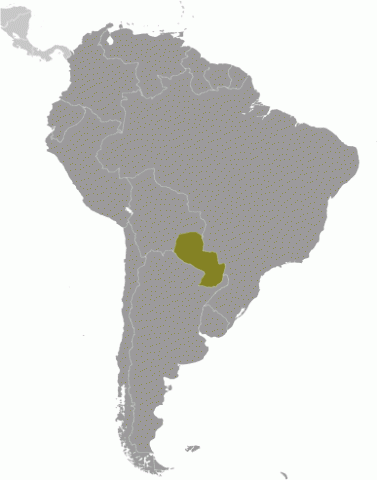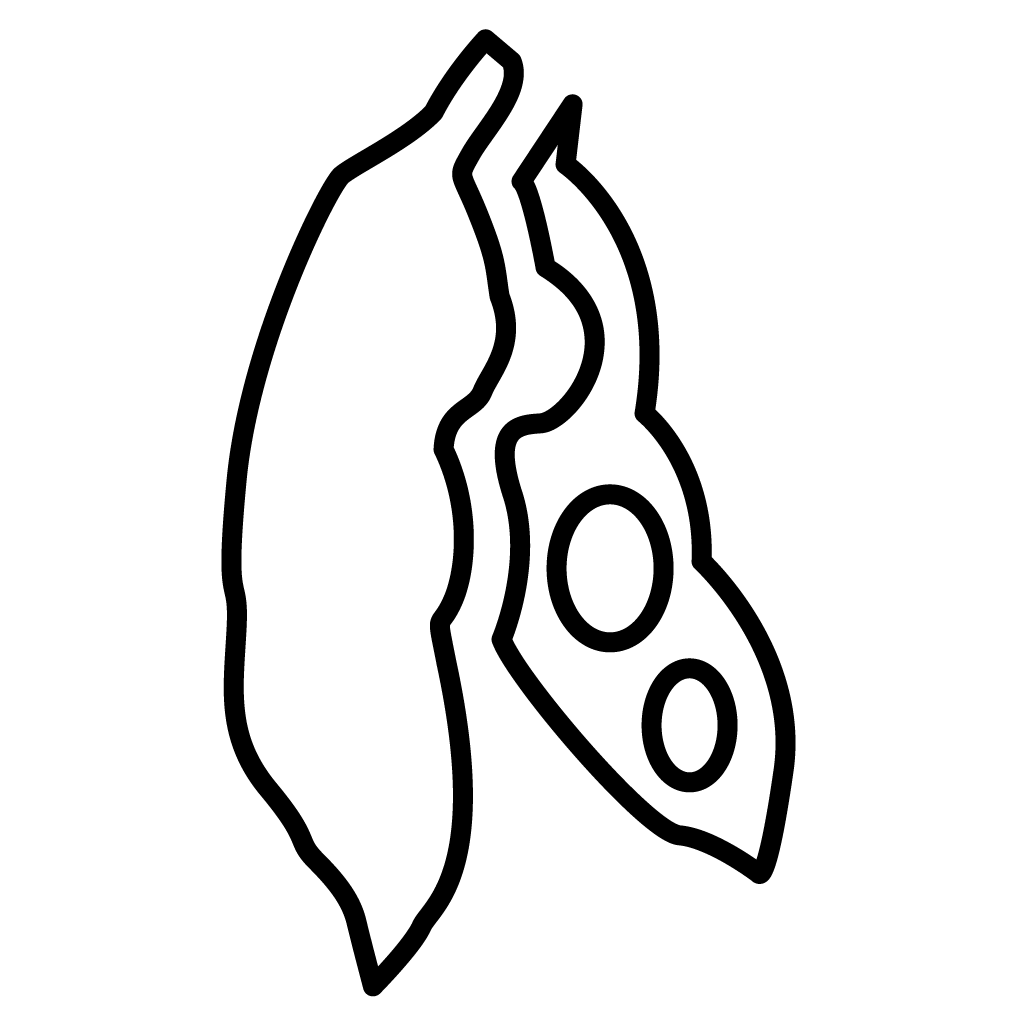Child Labor and Forced Labor Reports
Paraguay


Moderate Advancement
In 2024, Paraguay made moderate advancement in efforts to eliminate the worst forms of child labor. The Governments of Paraguay and Argentina established the first Binational Border Roundtable Against Child Labor with the purpose of facilitating collaboration and coordination to address child labor in border regions. Paraguay’s Ministry of Labor, Employment and Social Security and the Ministry of Children and Adolescents signed an inter-institutional cooperation agreement under the framework of the National Strategy for the Prevention and Eradication of Child Labor and Protection of Adolescent Labor. The agreement aims to increase program and project coordination between the two agencies to address child labor. The government also expanded the reach of its Tekoporã Cash Transfer Program to an additional 3,666 families, bringing the program’s total reach to 184,000 families. However, despite these efforts, children from rural and native communities face difficulties accessing and completing their education, making them more vulnerable to child labor. Social programs also lack the funding and coverage needed to address child labor in rural areas. In addition, law enforcement agencies lack the funding and resources needed to sufficiently identify, investigate, and prosecute child labor crimes.
| Children | Age | Percent and Population |
|---|---|---|
| Working | 5 to 14 | 5.4% (36,569) |
| Hazardous Work by Children | 15 to 17 | Unavailable |
| Attending School | 5 to 14 | Unavailable |
| Combining Work and School | 7 to 14 | Unavailable |
| Sector/Industry | Percent of Population |
|---|---|
| Agriculture | 53.0% |
| Industry | 14.8% |
| Services | 32.2% |
| Sector/Industry | Activity |
|---|---|
| Agriculture | Working in agriculture, including in the production of peppers, manioc/cassava, corn, beans, peanuts, sesame, sugarcane, tomatoes, lettuce, melons, sweet potatoes, onions, carrots, cabbages, and yerba mate (stimulant plant). Raising poultry, hogs, cattle,† sheep, and goats. Fishing, including using hooks and harpoons,† preparing bait, and cleaning fish.† |
| Industry | Construction, including handling heavy loads, machinery or equipment,† and production of bricks. Limestone quarrying.† |
| Services | Domestic work and street work,† including vending, shining shoes, and begging. Scavenging in landfills.† Horse jockeying. † |
| Categorical Worst Forms of Child Labor‡ | Debt bondage in cattle raising. Forced domestic work. Commercial sexual exploitation and use in the production of child pornography. Use in illicit activities, including the smuggling and trafficking of drugs. |
† Determined by national law or regulation as hazardous and, as such, relevant to Article 3(d) of ILO C. 182.
‡ Child labor understood as the worst forms of child labor per se under Article 3(a)–(c) of ILO C. 182.
Children at Higher Risk
Children from remote rural communities are particularly vulnerable to exploitation. Continuous droughts in the Chaco region have increased the risk of child labor for native children living in these remote areas. Further, the worst forms of child labor are prevalent along Paraguay’s eastern and southern borders with Brazil and Argentina, where some children are trafficked across borders for the purposes of commercial sexual exploitation. Communities along the Ruta Bioceánico, a highway under construction in northern Paraguay intended to link Chile and Brazil, are also vulnerable to commercial sexual exploitation. Many families in Paraguay view criadazgo—a system in which middle to upper class families informally employ and house young children as domestic workers—as a means of pursuing educational opportunities. According to civil society reports, approximately 47,000 children, mostly girls, serve as domestic workers under the criadazgo system, in which they are at risk of exploitation within private homes.
Barriers to Education Access
Children from rural communities, particularly those living in the Chaco region, face difficulties accessing and completing their education due to a lack of transportation, inadequate facilities and staff, a lack of identity documents, and little to no internet connectivity. Language has also been reported as a barrier to education for children from native communities who are not fluent in Spanish. The government reports that educational exclusion is linked to high levels of poverty, a lack of development in certain areas, and increased migration. Such challenges may leave these children more vulnerable to child labor.
| Standard | Age | Meets International Standards | Legislation |
|---|---|---|---|
| Minimum Age for Work | 18 | ✓ | Article 1 of Law No. 2332; Article 58 of the Childhood and Adolescence Code |
| Minimum Age for Hazardous Work | 18 | ✓ | Article 54 of the Childhood and Adolescence Code; Article 3 of Decree No. 4951; Articles 122 and 125 of the Labor Code; Article 15 of the First Employment Law; Article 5 of Law No. 5407 on Domestic Work |
| Identification of Hazardous Occupations or Activities Prohibited for Children | ✓ | Article 54 of the Childhood and Adolescence Code; Article 2 of Decree No. 4951; Article 15 of the First Employment Law; Articles 122, 125, and 389 of the Labor Code; Article 5 of Law No. 5407 on Domestic Work | |
| Prohibition of Slavery, Debt Bondage, and Forced Labor | ✓ | Articles 5–7 of the Comprehensive Law Against Trafficking in Persons; Articles 125, 129, and 320 of the Penal Code; Articles 10 and 54 of the Constitution | |
| Prohibition of Child Trafficking | ✓ | Articles 4–7 of the Comprehensive Law Against Trafficking in Persons; Articles 125 and 129 of the Penal Code; Articles 10 and 54 of the Constitution | |
| Prohibition of Commercial Sexual Exploitation of Children | ✗ | Article 139 of the Penal Code; Articles 4–7 of the Comprehensive Law Against Trafficking in Persons; Article 2.19 of Decree No. 4951; Article 31 of the Childhood and Adolescence Code | |
| Prohibition of Using Children in Illicit Activities | ✓ | Article 1 of Law No. 1657; Article 32 of the Childhood and Adolescence Code | |
| Minimum Age for Voluntary State Military Recruitment | ✗ | Articles 3-5 of the Obligatory Military Service Law | |
| Prohibition of Compulsory Recruitment of Children by (State) Military | ✓ | Articles 3-5 of the Obligatory Military Service Law | |
| Prohibition of Military Recruitment by Non-state Armed Groups | ✗ | ||
| Compulsory Education Age | 17 | ✓ | Article 2 of Law No. 4088; Articles 29, 32, and 37 of the General Education Law No. 1264; Decree 6162 |
| Free Public Education | ✓ | Article 76 of the Constitution; Articles 1, 2, and 32 of the General Education Law No. 1264; Decree 6162 |
Children in Paraguay are required to attend school only up to age 17. This standard makes children aged 17 vulnerable to child labor as they are not required to attend school but are not legally permitted to work without restriction on hours and times of work. Laws related to commercial exploitation of children do not meet international standards because the use of children in prostitution is not criminalized. Paraguay also lacks a prohibition on the military recruitment of children by non-state armed groups. The law also falls below the international standard because it does not establish 16 or 17 as the minimum age for voluntary state military recruitment with sufficient safeguards for voluntariness.
| Organization/Agency | Role & Activities |
|---|
| Ministry of Labor, Employment and Social Security (MTESS): Enforces laws related to child labor, inspects workplaces for child labor, and recommends penalties or fines for companies found in violation of labor laws. Refers cases involving criminal violations to the Public Ministry. If MTESS finds vulnerable children or children in situations of child labor, it refers them to the Ministry of Children and Adolescents for inclusion in social programs. |
| Public Ministry (Attorney General): Investigates and prosecutes criminal cases related to the worst forms of child labor. The Paraguayan National Police assist with investigations and can arrest suspects at the request of the Public Ministry. The Public Ministry also maintains the Specialized Unit to Combat Human Trafficking and Sexual Exploitation of Children and Adolescents, comprising 2 specialized prosecutors based in Asunción, 1 specialized prosecutor based in Ciudad del Este, and 44 assistants. |
| Overview of Enforcement Efforts | 2024 |
|---|---|
| Has a Labor Inspectorate | Yes |
| Able to Assess Civil Penalties | Yes |
| Routinely Conducted Worksite Inspections | Yes |
| Unannounced Inspections Permitted | Yes |
| Has a Complaint Mechanism | Yes |
| Imposed Penalties for Child Labor Violations | Yes |
| Conducted Criminal Investigations for Worst Forms of Child Labor Crimes | Yes |
| Imposed Penalties for Worst Forms of Child Labor Crimes | Yes |
In 2024, 19 labor inspectors conducted 843 worksite inspections, finding 2 child labor violations. The government also conducted 1,838 investigations into suspected worst forms of child labor crimes, initiated 12 prosecutions, and convicted 10 perpetrators.
| Coordinating Body | Role & Activities |
|---|
| National Commission to Prevent and Eradicate Child Labor and Protect Adolescent Labor: Leads government efforts against child labor and includes representatives from MTESS, the Ministry of Justice and Human Rights, the Ministry of Women’s Affairs, the Ministry of Children and Adolescents, and other government agencies, as well as representatives from labor unions, industry associations, and NGOs. The commission manages the National Strategy for the Prevention and Eradication of Child Labor and Protection of Working Adolescents. During the reporting period, the government created two Departmental Commissions for the Eradication of Child Labor in the departments of Amambay and San Pedro and reactivated two Commissions in the departments of Boquerón and Itapúa. The aim of these commissions is to socialize and implement the National Strategy for the Eradication of Child Labor in Paraguay. |
| Policy | Description & Activities |
|---|
| National Strategy for the Prevention and Eradication of Child Labor and Protection of Working Adolescents (2019–2024): Focused on raising awareness and strengthening enforcement of child labor laws. Provided child laborers with access to free quality education and offered livelihood alternatives for their families. In 2024, MTESS and the Ministry of Children and Adolescents signed an inter-institutional cooperation agreement under the framework of the National Strategy for the Prevention and Eradication of Child Labor and Protection of Working Adolescents. The agreement aims to increase program and project coordination between the two agencies on subject areas like the eradication of child labor. |
| National Plan for Childhood and Adolescence (2022–2024): Focused the protection of children and adolescents on four main axis points: (1) strengthening of the protective role of the family; (2) comprehensive protection of the rights of children and adolescents, including labor rights; (3) promotion and communication of the rights of children and adolescents; and (4) strengthening of the national system’s ability to protect and promote the rights of children. Each point mentioned in the plan is supplemented by a number of strategic objectives, including the expansion of protection programs linked to child labor and its worst forms, identification of high-risk situations that can lead to instances of child labor, and strengthening of health and education services. Research was unable to determine whether activities were carried out under this policy during the reporting period. |
| National Plan for the Prevention of Trafficking in Persons (2020–2024): Aimed to guide government prevention, response, and protection actions and to establish prosecution and penalty guidelines for trafficking in persons. Also prioritized institutional capacity building and coordination between government entities. In 2024, the government carried out an evaluation of the National Plan with support from the Spanish Cooperation Agency, intended to help to create a draft of a new National Plan in 2025. |
| Program | Description & Activities |
|---|
| Immediate Response Network:‡ Program created to provide support to street children. Under the Dispositivo de Respuesta Inmediata, employees from the Ministry of Childhood and Adolescents with a range of specializations, including psychologists and social workers, respond to tips from the Ministry hotline for reporting mistreatment, sexual abuse, sexual exploitation, and negligence of children, as well as information from roving street patrols in high-risk areas. During the reporting period, the Immediate Response Network continued to monitor areas where children have been identified to be working in street vending. Children found working alongside parents were admitted into the Kunu’u Rendá Care Center, where they were provided food, recreation, and rest. |
| Embrace Program (Programa Abrazo):‡ Ministry of Childhood and Adolescents program to assist children engaged in exploitative work by providing them and their families with health and education services, food deliveries, and cash transfers conditioned on children’s school attendance and withdrawal from work. In this program, children can also join protection units, through which they can engage in recreational activities and receive school reinforcement, food, and protection from child labor. The program currently operates 68 attention centers in 13 of Paraguay’s 17 departments, benefitting more than 13,400 vulnerable children from more than 5,100 families. During the reporting period, the program offered social support to families to improve their quality of life, including home visits, workshops, training sessions, and assistance in accessing employment opportunities and creating small businesses. |
| Well-Being Conditional Cash Transfer Program (Tekoporã):‡ Government-administered program through the Ministry of Social Development. Provides conditional cash transfers to families in rural communities. Incorporates aspects of the Embrace Program, such as the family monitoring methodology, to ensure that participant children do not engage in child labor. During the reporting period, the cash transfer program expanded its reach to more than 183,666 families, including 326,942 children and adolescents. |
‡ Program is funded by the Government of Paraguay.
† The government had other social programs that may have included the goal of eliminating or preventing child labor.
| Area | Suggested Action |
|---|---|
| Legal Framework | Ensure that the law criminally prohibits the recruitment of children under age 18 by non-state armed groups. |
| Increase the compulsory education age from 17 years old to 18 years old to align with the minimum age for work. | |
| Ensure that the law criminally prohibits the use of a child for prostitution. | |
| Ensure that the law established 16 or 17 as the minimum age for voluntary recruitment by the state military with safeguards for voluntariness. | |
| Enforcement | Increase the number of labor inspectors from 19 to 229 to provide adequate coverage of the labor force of approximately 3.4 million workers and provide office facilities, transportation, fuel, and increased funding to the labor inspectorate, specifically in the Chaco region, to build enforcement capacity to address child labor in the informal sector, including in agriculture and domestic work. |
| Implement the 2016 agreement to accelerate authorization of workplace inspection search warrants to improve the cooperation mechanisms between judicial authorities and labor enforcement officials. | |
| Provide increased resources, such as funding and fuel for law enforcement vehicles, to enable criminal investigations in remote areas, and provide researchers in the specialized police unit with additional training so they can collect data on the worst forms of child labor. | |
| Increase efforts to prosecute crimes related to the worst forms of child labor, including by hiring and training specialized criminal investigators and prosecutors. | |
| Ensure that fines and penalties for those convicted of child labor crimes are consistently applied. | |
| Ensure that labor inspectors are given stability of employment needed to fulfill their duties by granting permanent public servant status. | |
| Coordination | Provide additional financial and human resources to all coordinating mechanisms so that they can fulfill their mandate, which includes collecting and reporting on child labor statistics and addressing child labor issues. |
| Strengthen interagency coordinating mechanisms, with particular focus on the communication between the Ministry of Labor, Employment and Social Security and the Ministries of Education and Health, to address child labor, including its worst forms. | |
| Allocate dedicated funding to the National Program to Combat Trafficking in Persons. | |
| Government Policies | Take steps to implement the National Plan for Childhood and Adolescence and publish information about these efforts on an annual basis. |
| Take steps to implement an updated version of the National Plan for the Prevention of Trafficking in Persons and publish information about these efforts on an annual basis. | |
| Social Programs | Increase access to education for children vulnerable to child labor, particularly for children living in rural communities, by addressing the lack of identity documents, infrastructure, staff, internet connectivity, and transportation. |
| Ensure that financial assistance programs for child trafficking and forced labor survivors are properly funded and staffed in order to maintain a consistent survivor-centered approach. | |
| Further expand government programs to assist more families and children affected by child labor in agriculture in rural areas, including cattle herding and domestic work. | |
| Collect and publish data on the extent and nature of child labor to inform policies and programs. | |
| Create public outreach and education campaigns to provide youth and their families with more information on criadazgo. |


























